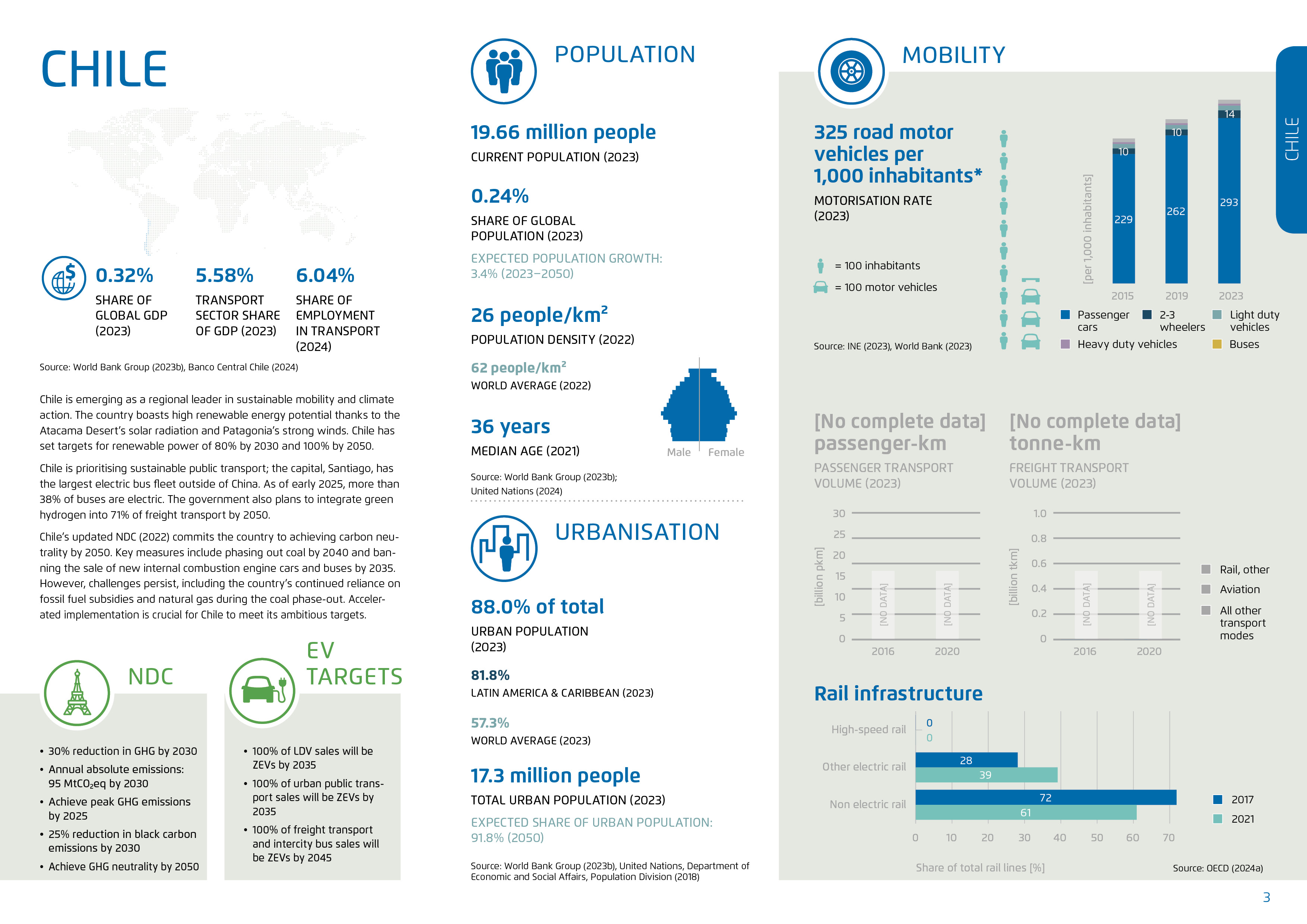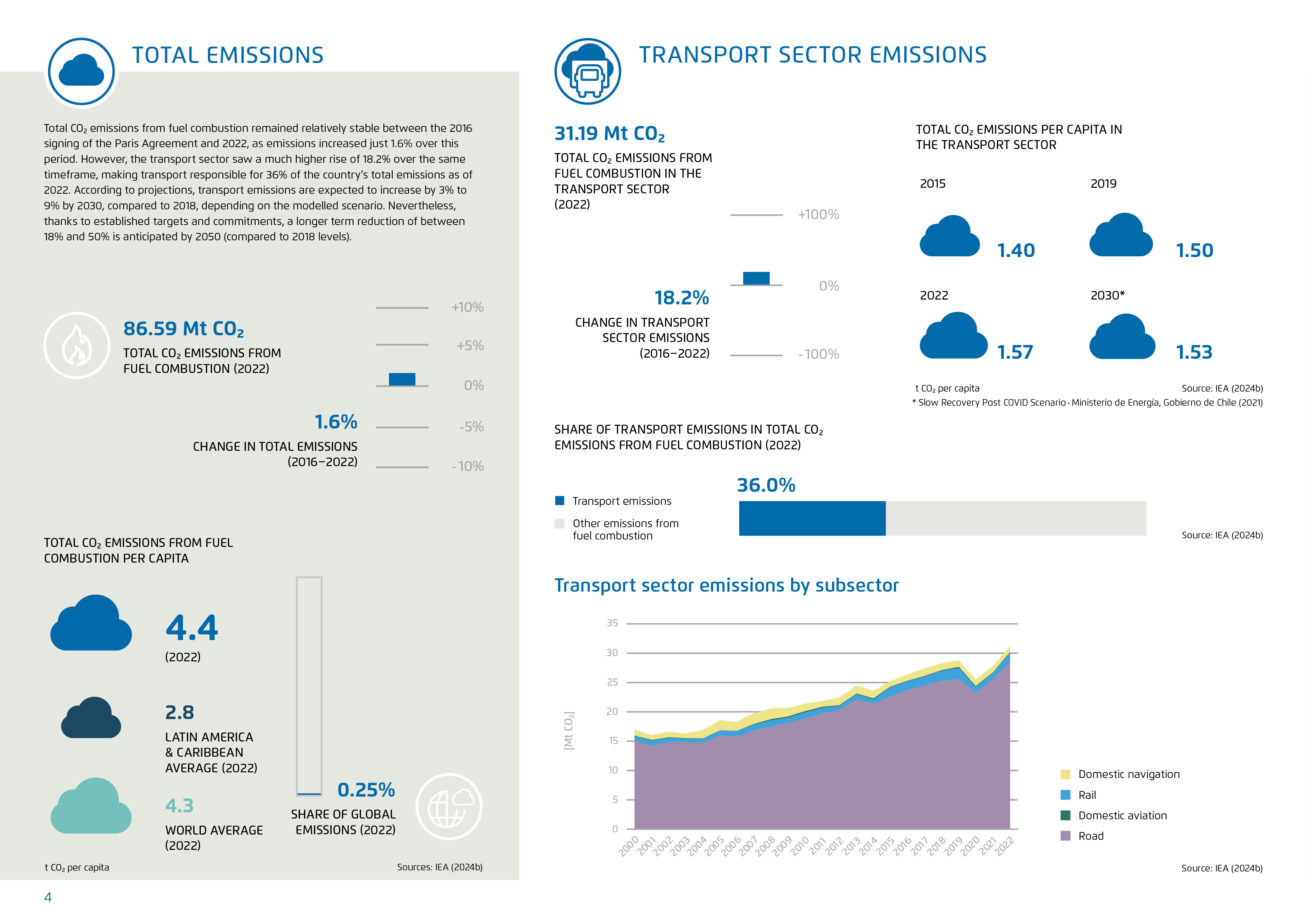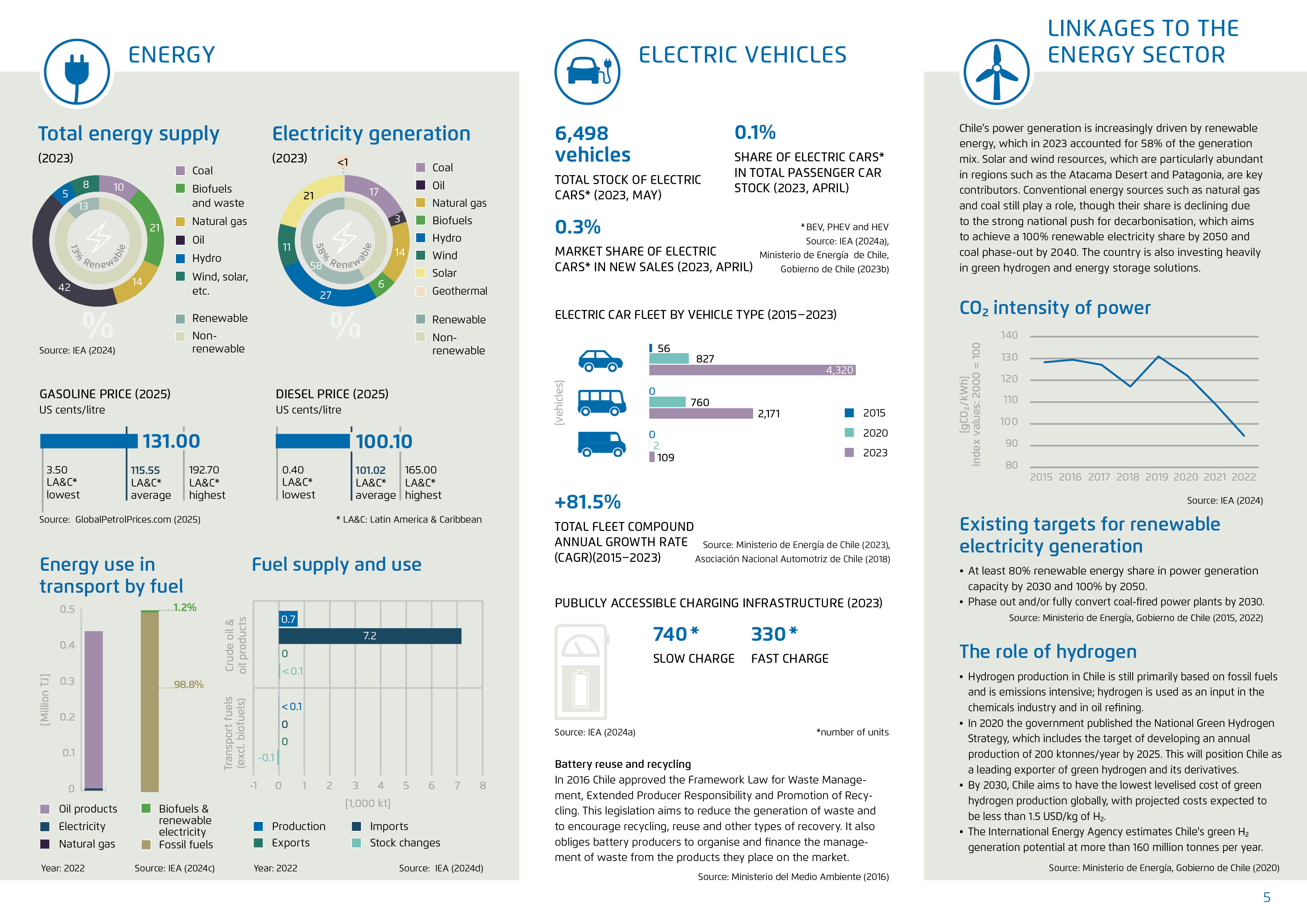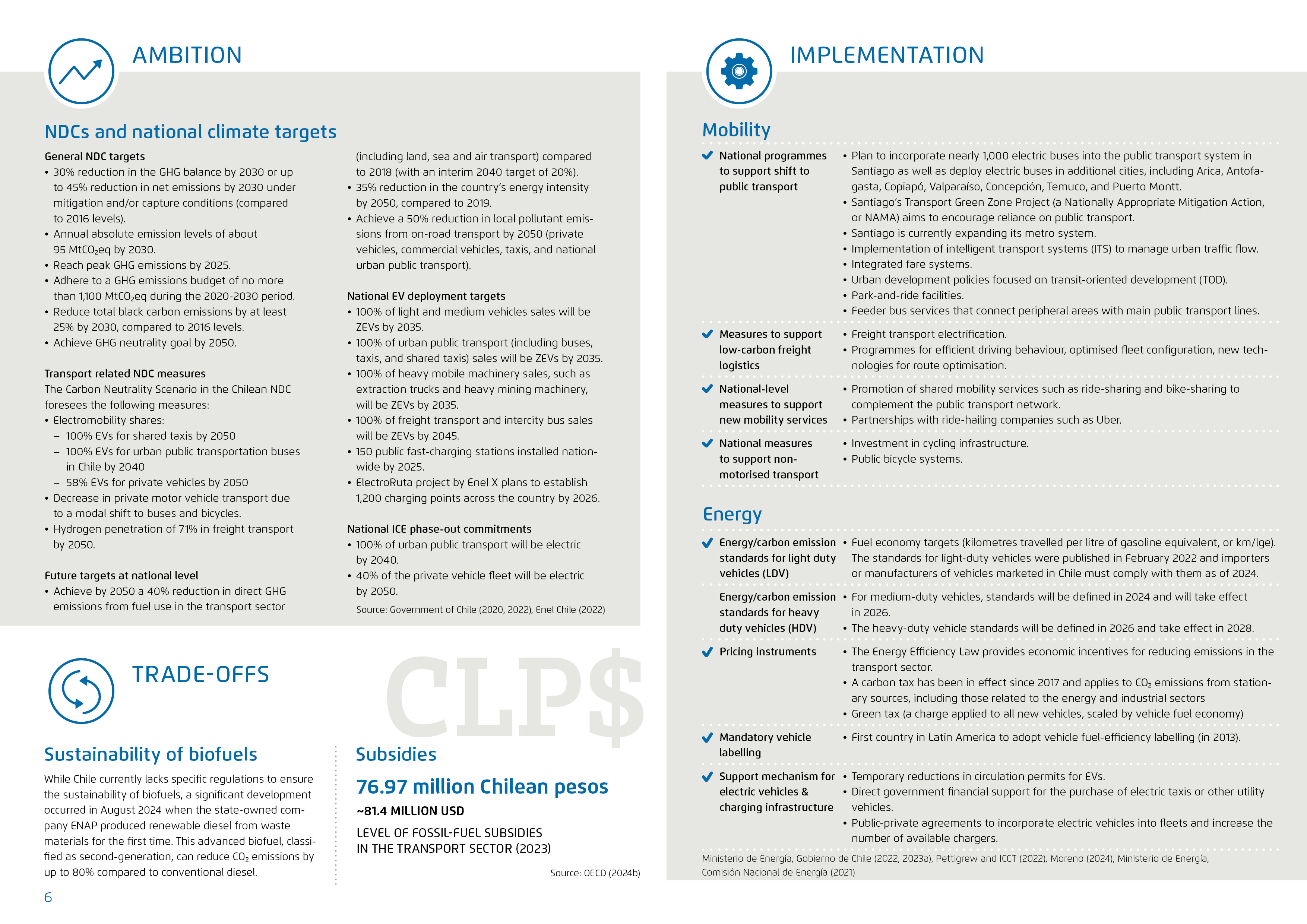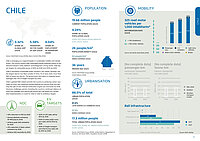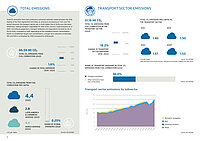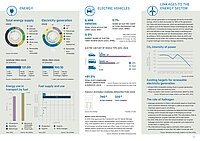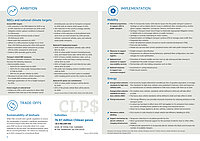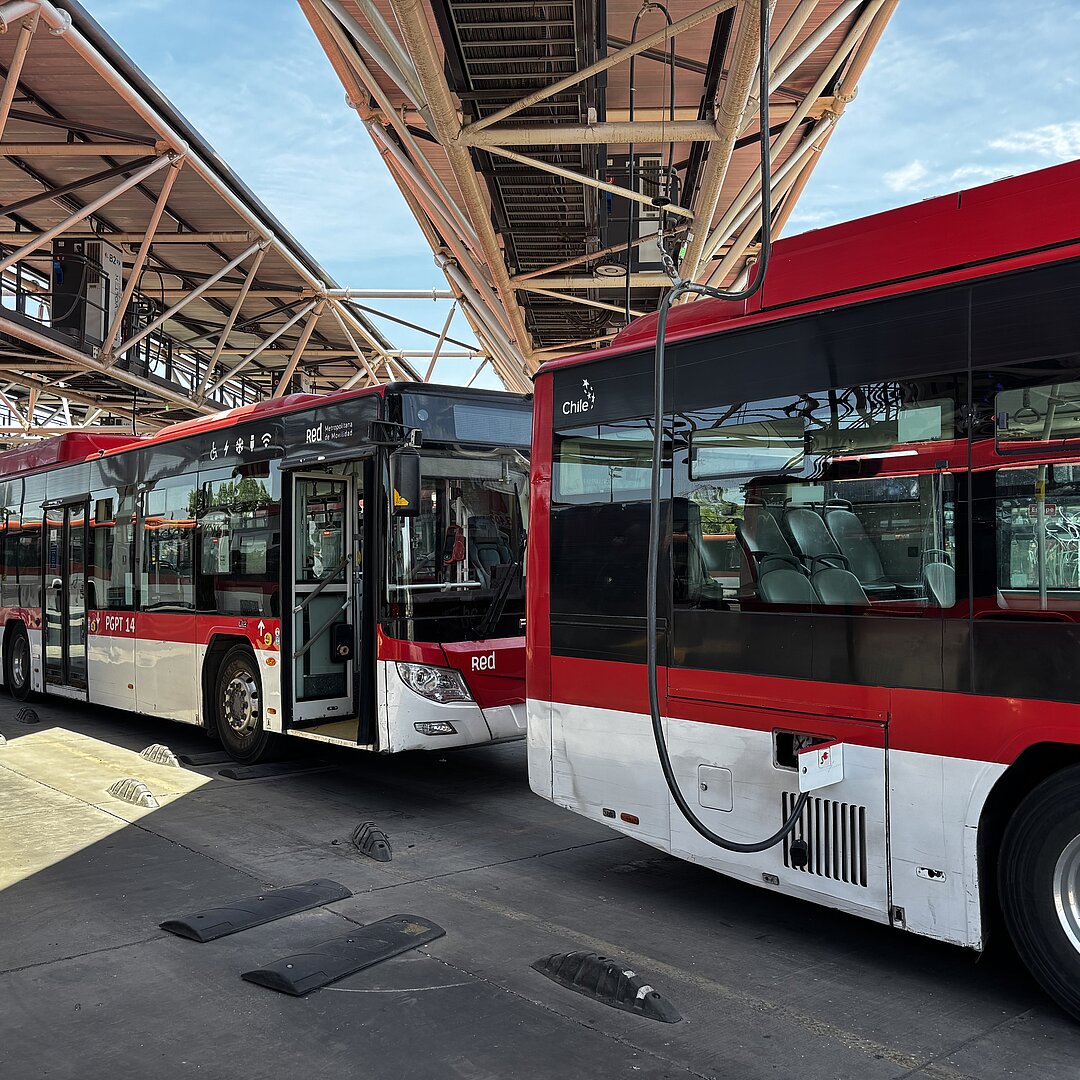This content is also available in: German
Chile
GHG neutrality: 2050 / Motorisation rate (2023): 325 vehicles per 1,000 inhabitants / Change in transport sector emissions (2016–2022): 18.2 % / Projected total CO2 emissions per capita in the transport sector in 2030: 1.53 t

Chile is emerging as a regional leader in sustainable mobility and climate action. The country boasts high renewable energy potential thanks to the Atacama Desert’s solar radiation and Patagonia’s strong winds. Chile has set targets for renewable power of 80% by 2030 and 100% by 2050.
Chile is prioritising sustainable public transport; the capital, Santiago, has the largest electric bus fleet outside of China. As of early 2025, more than 38% of buses are electric. The government also plans to integrate green hydrogen into 71% of freight transport by 2050.
Chile’s updated NDC (2022) commits the country to achieving carbon neutrality by 2050. Key measures include phasing out coal by 2040 and banning the sale of new internal combustion engine cars and buses by 2035. However, challenges persist, including the country’s continued reliance on fossil fuel subsidies and natural gas during the coal phase-out. Accelerated implementation is crucial for Chile to meet its ambitious targets.
Key figures on transport and climate
Published in Towards Decarbonising Transport: Chile 2025.

